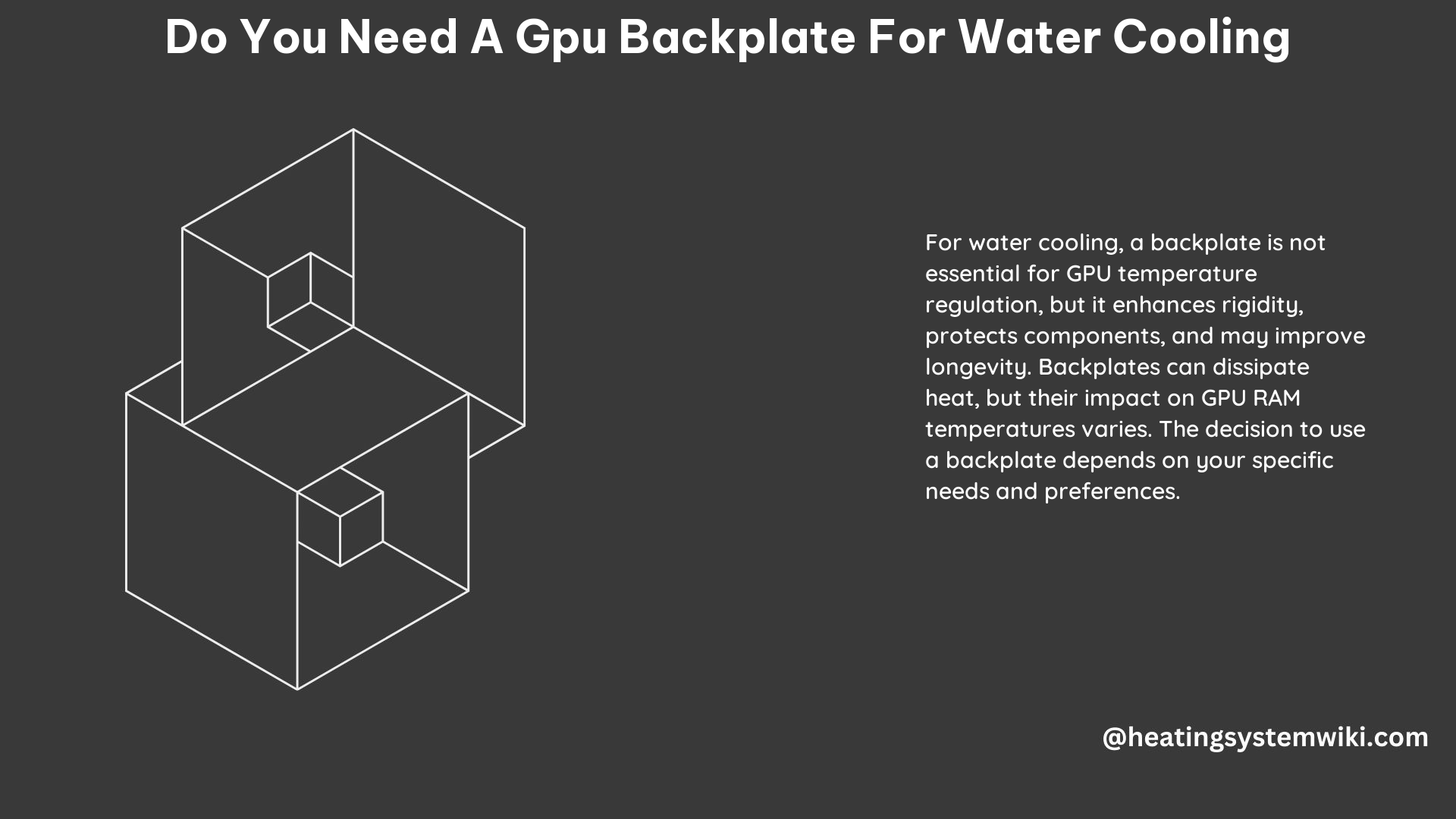When it comes to water cooling a GPU, the question of whether a backplate is necessary often arises. The general consensus is that a backplate is not essential for the actual cooling performance of the GPU, but it can provide additional benefits in certain scenarios. Let’s dive deeper into the technical specifications, DIY considerations, and the role of a backplate in a water-cooled GPU setup.
Technical Specifications
Cooling Performance
A backplate does not directly contribute to the cooling of the GPU or its memory when using a water cooling system. The primary function of the backplate is for aesthetics and rigidity, rather than thermal management.
Structural Support
However, a backplate can provide additional support for a horizontally mounted GPU with a heavy heatsink or water block. This can enhance the card’s structural integrity and prevent sagging, which could potentially lead to damage or reduced cooling performance.
Active Backplate Cooling
Some high-end water blocks, such as the EK-Quantum Vector² FE RTX 4090 Water Block, include an active backplate waterblock designed to cool the GPU’s memory more effectively. This feature, while offering improved cooling, comes at a significantly higher cost compared to traditional backplates.
Thermal Isolation
A backplate can also help prevent the back of the GPU from coming into contact with any metal components, which could potentially lead to damage or reduced cooling performance. This is particularly important in cases where the GPU is mounted in a tight or confined space.
DIY Considerations

Backplate Installation
When installing a water cooling system, it’s essential to ensure that the backplate is properly secured behind the motherboard. This may require the removal of the motherboard, depending on the specific water cooling system and GPU configuration.
Reusing Existing Backplates
If a backplate is already installed and fits the new water cooling system, it can be reused. However, if the existing backplate is not compatible, a new backplate may need to be installed.
Preventing Metal Contact
Regardless of whether a backplate is used or not, it’s crucial to ensure that the back of the GPU does not come into contact with any metal components. This is to prevent potential damage or reduced cooling performance.
Conclusion
In summary, while a backplate is not strictly necessary for water cooling a GPU in terms of cooling performance, it can provide additional support and protection for the card. The decision to use a backplate ultimately depends on the individual’s specific needs and preferences, as well as the water cooling system and GPU configuration.
